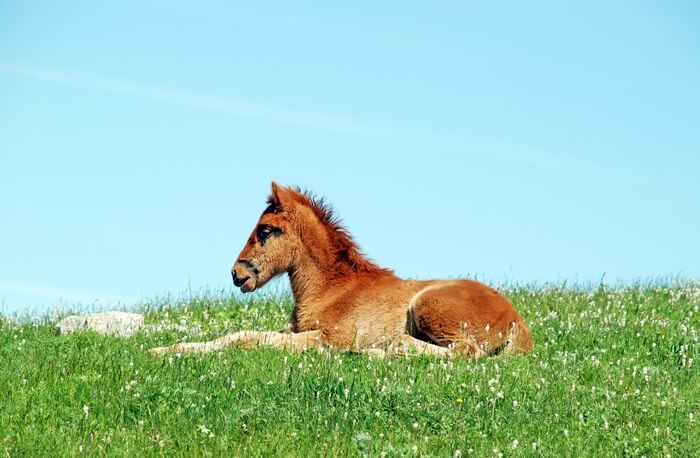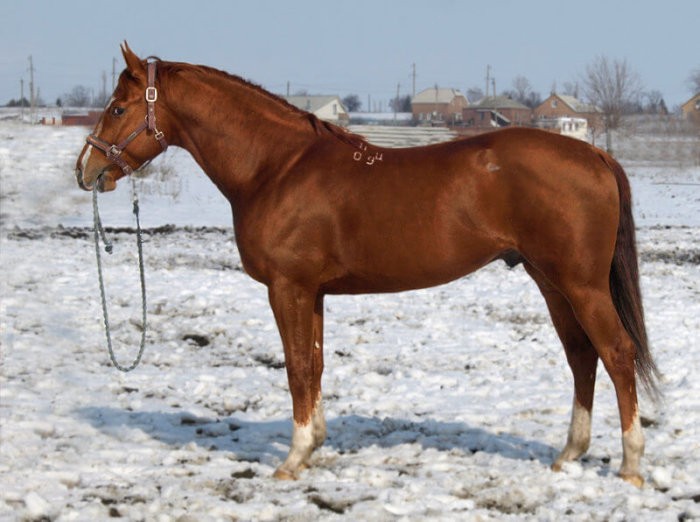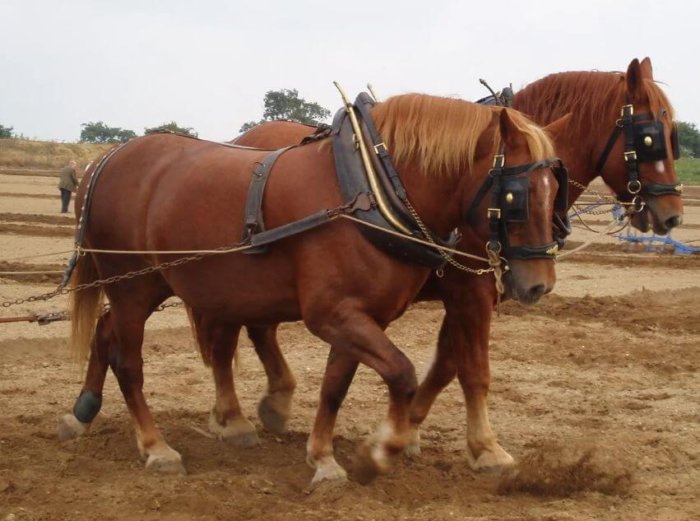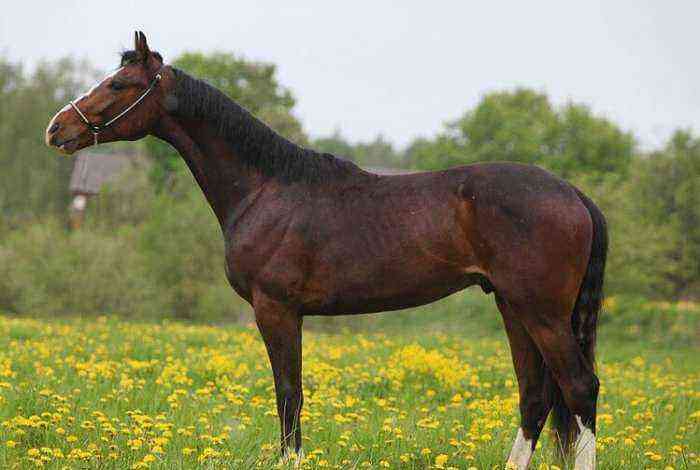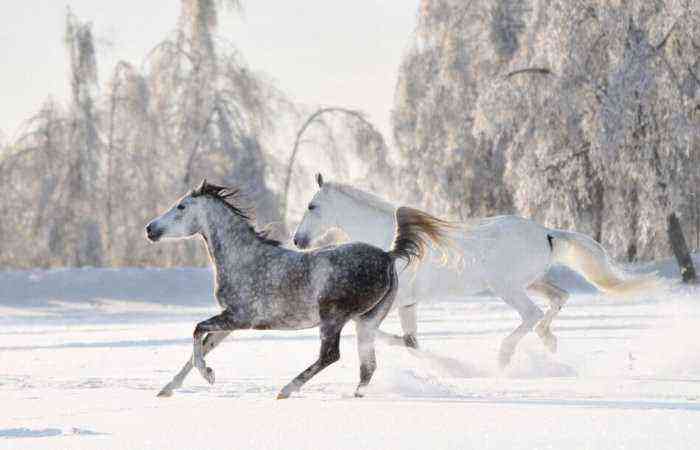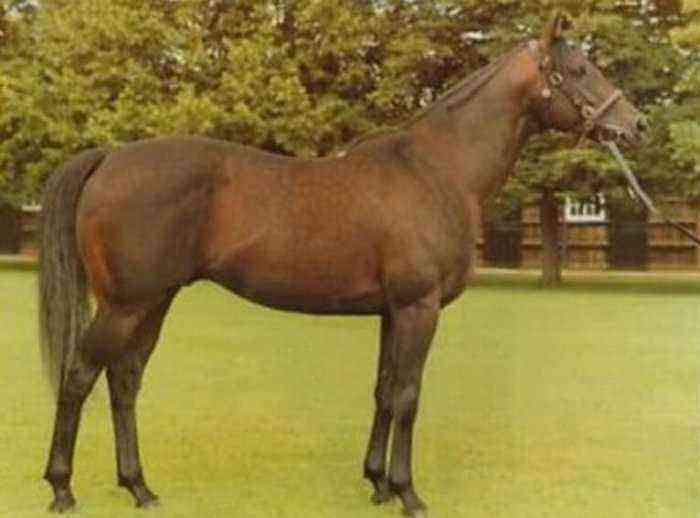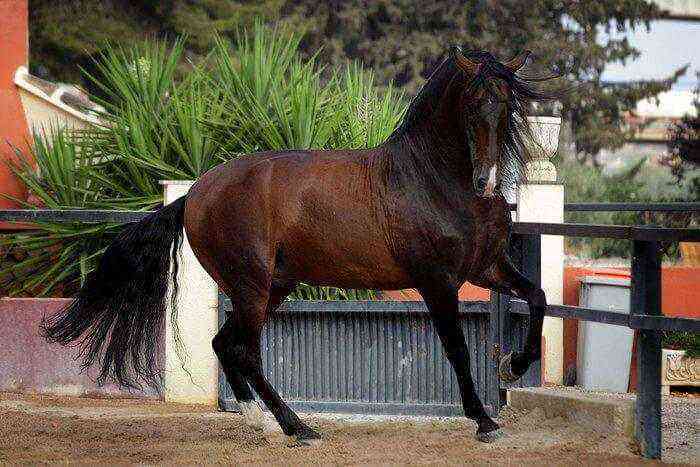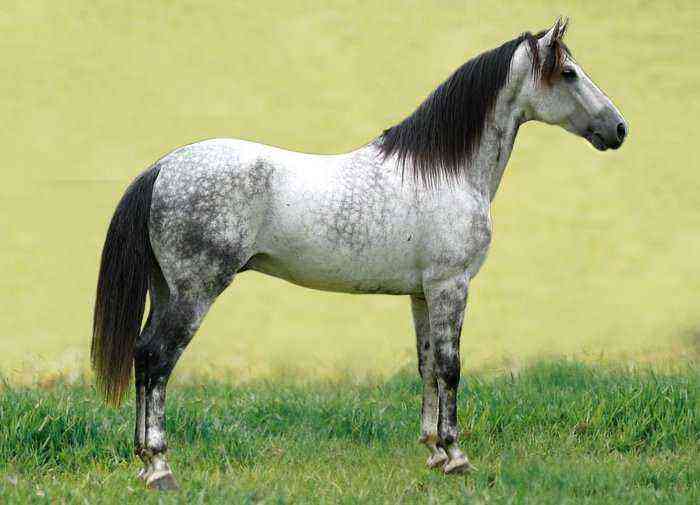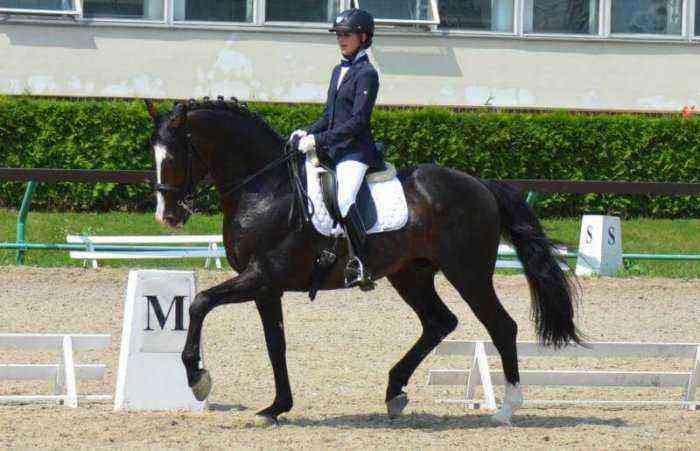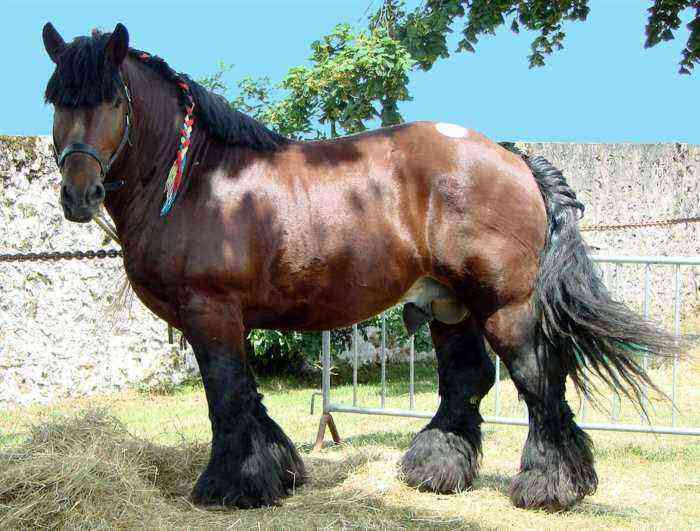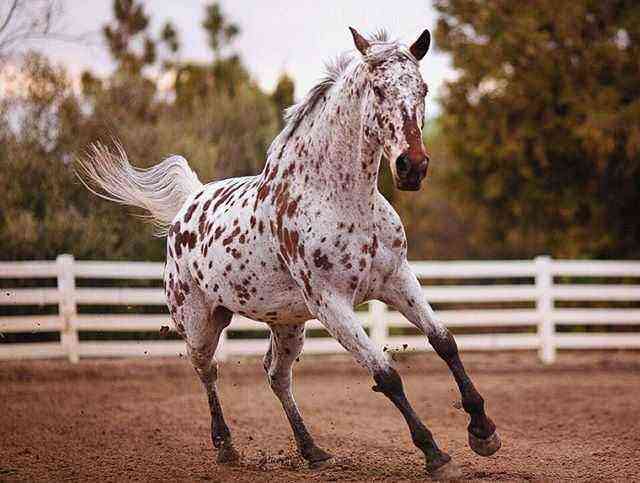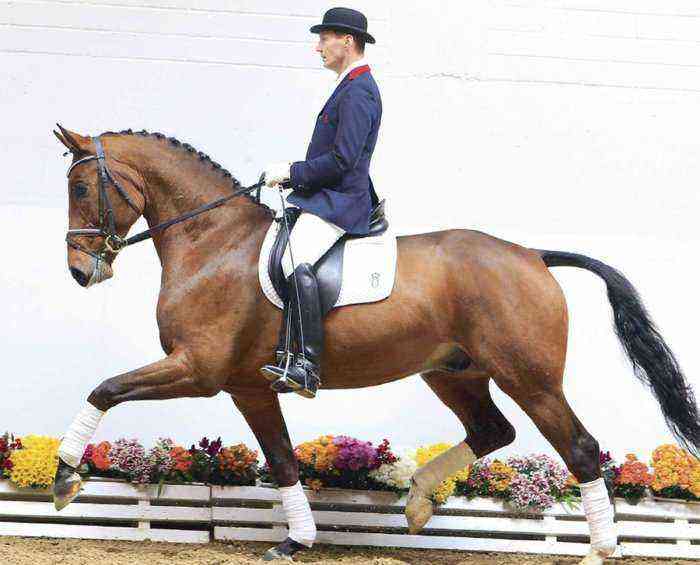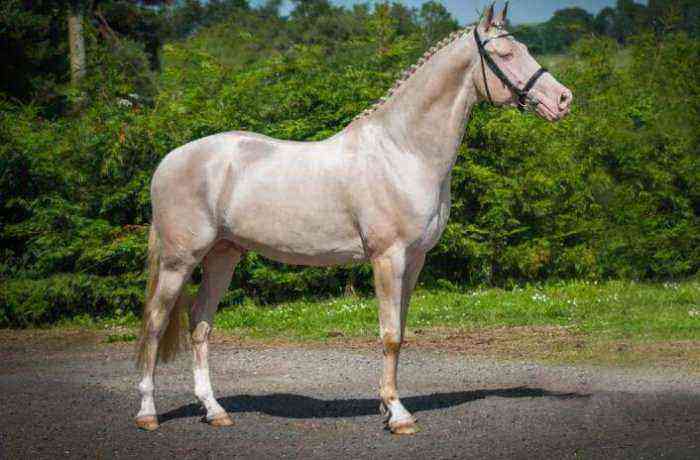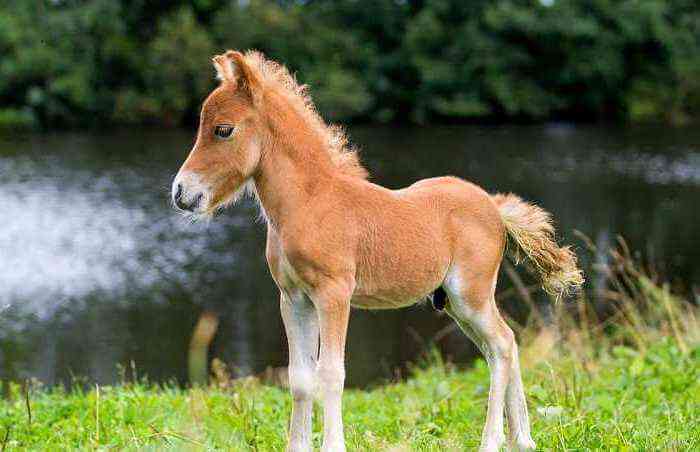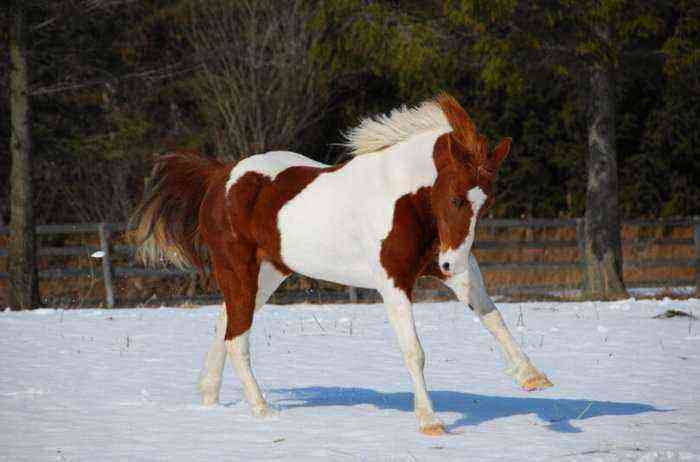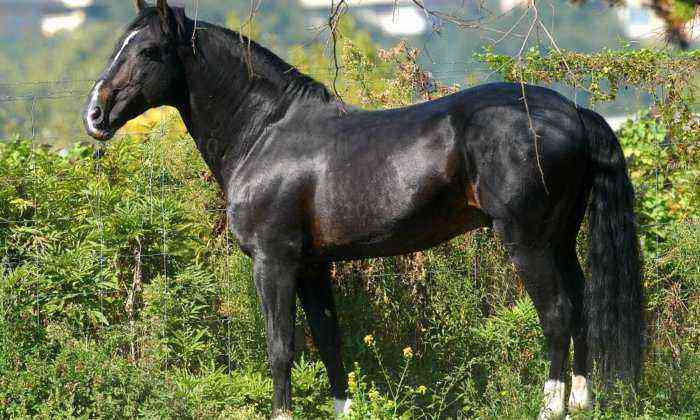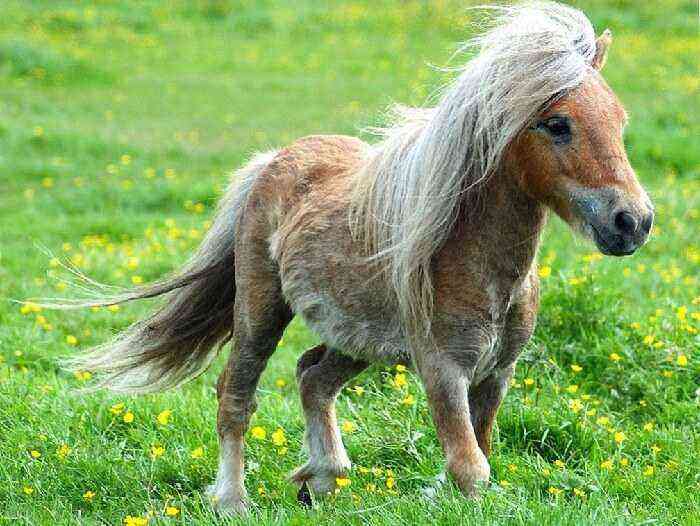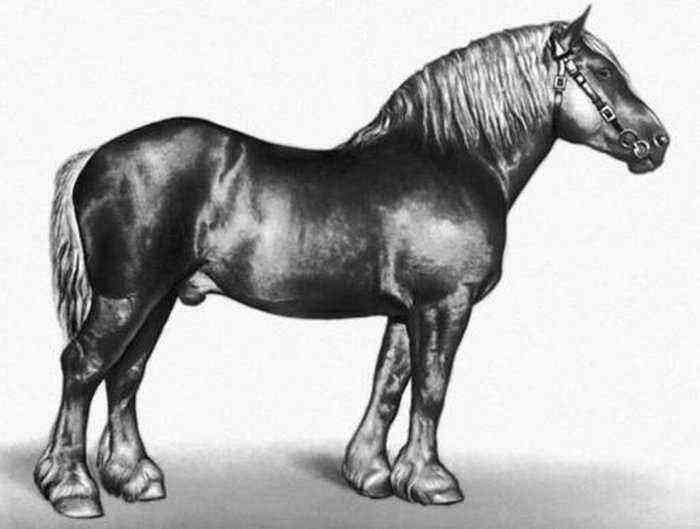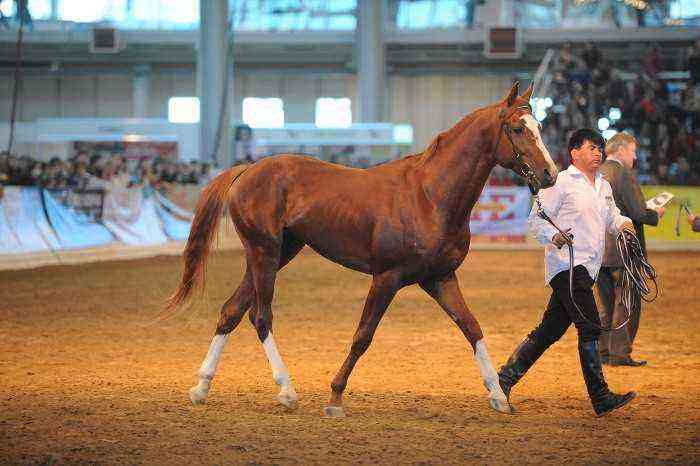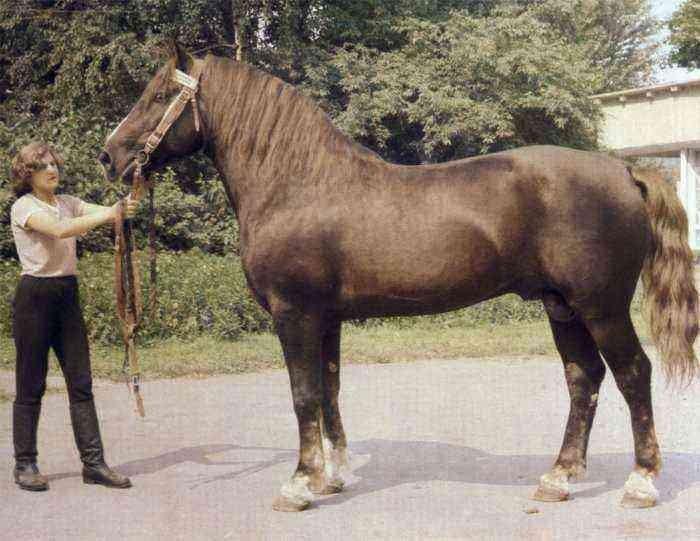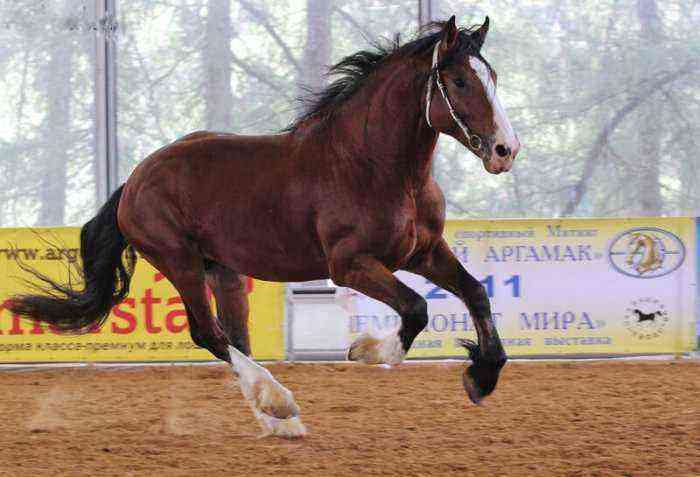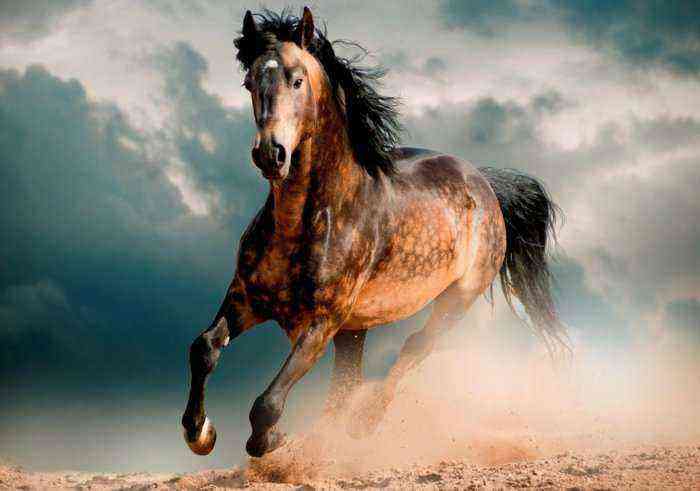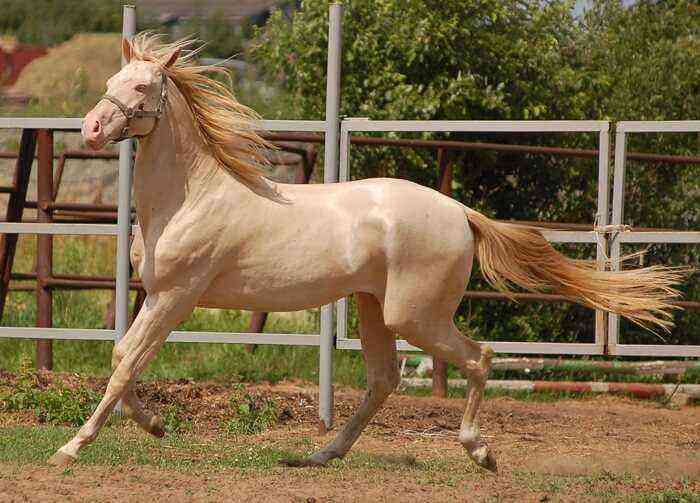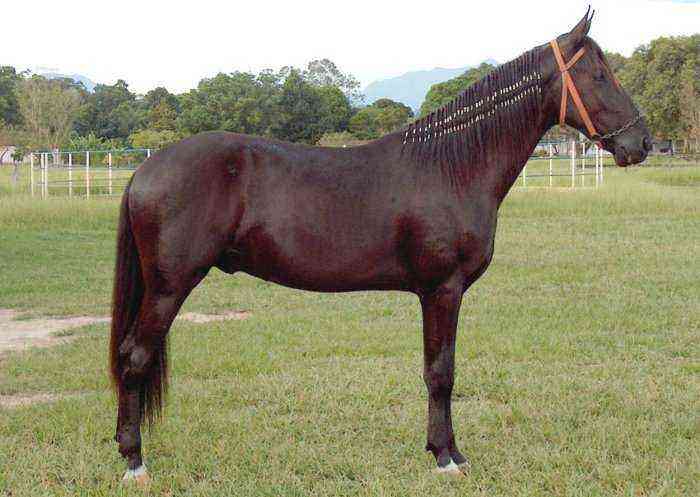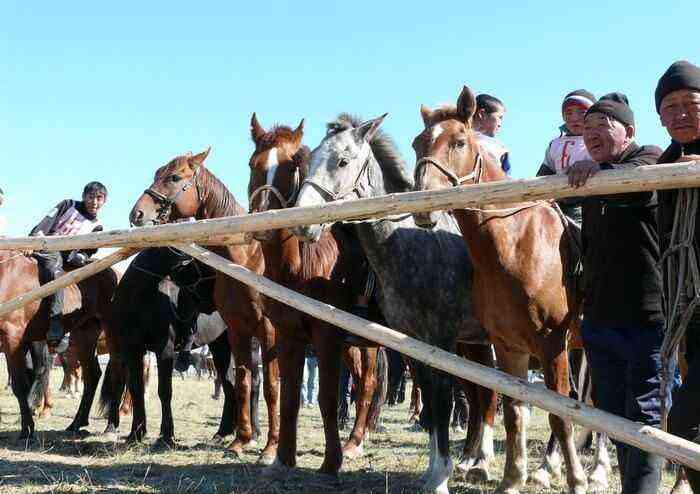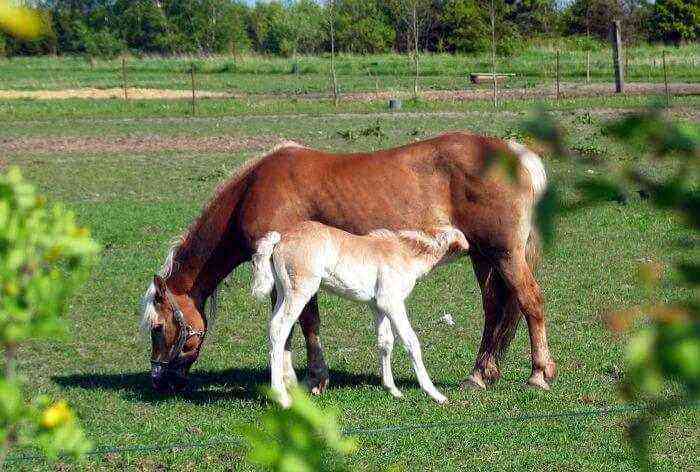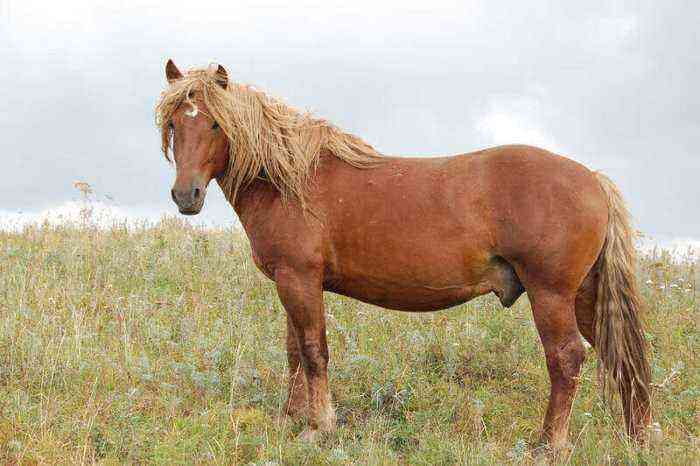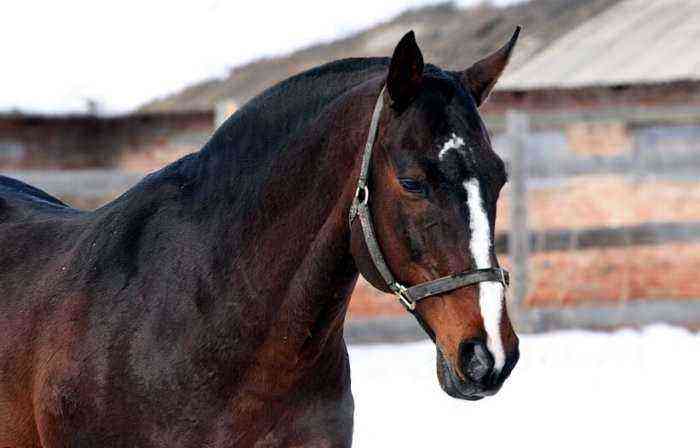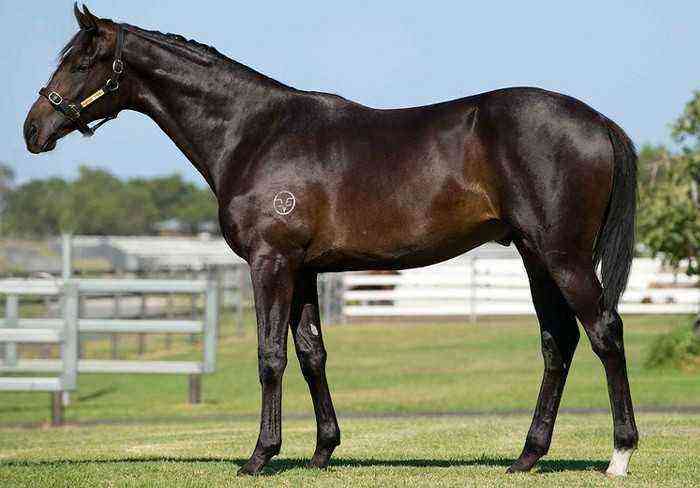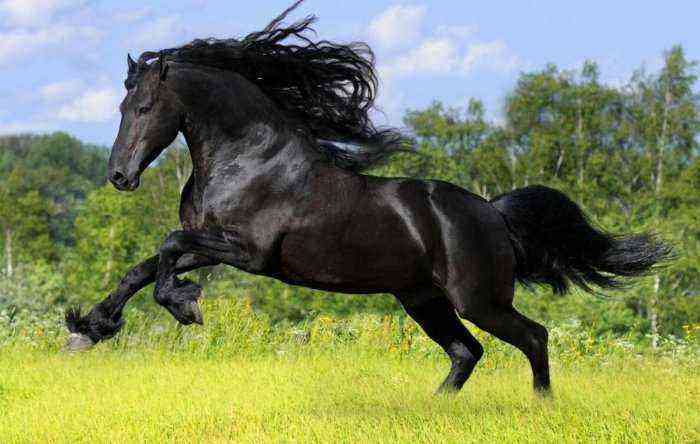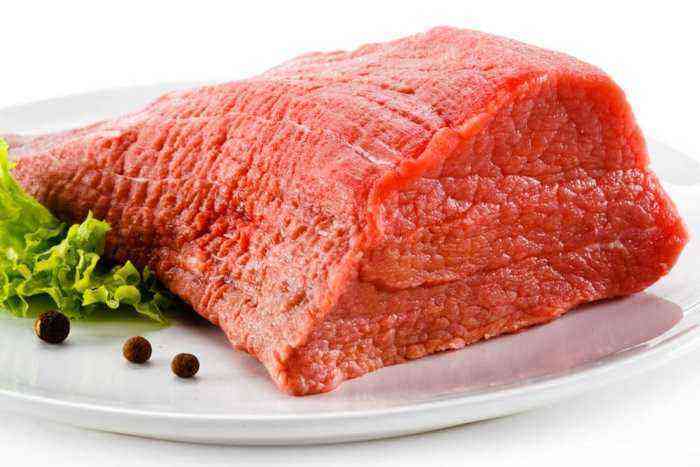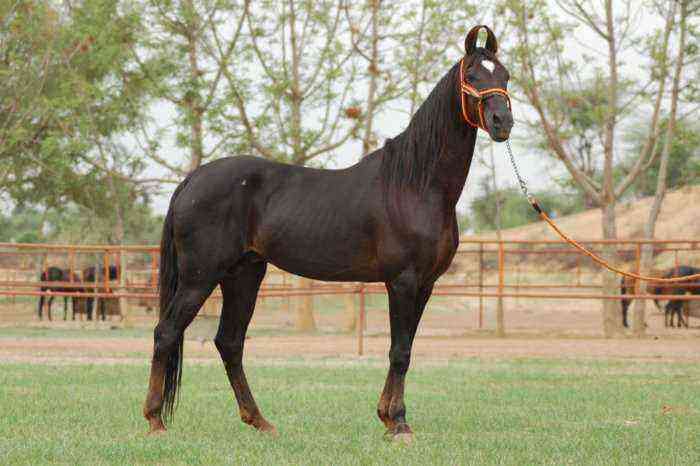Among the huge variety of existing colors and colors of horses, the redhead is one of the main ones. That is, it developed completely in natural conditions without human intervention. And only after that, in the course of painstaking selection work, the breeders managed to get various characteristic tricks from their horses. But whatever the prevailing shade, “fiery” horses always look impressive and attract attention.
“Fire” horses
Description and varieties of red suit
Red color is found in representatives of various breeds of horses. The main features of this color are the following:
- the whole body of the animal suggests a solid red color;
- the shade of red varies from light cream to chestnut in dark colors;
- the legs are almost always painted in the same shade as the body;
- the mane and tail of the animal can be several tones darker, and in some individuals they even turn white, fading in the summer;
- the eyes are predominantly brown in various shades, from bright amber to dark brown, almost black.
In addition to these main features, there are also more specific nuances that appear in individual individuals. So, in light-maned horses, the lower part of the belly and legs are painted in a lighter shade than the rest of the body. In animals with a darker mane, the color of the front of the legs is also several shades darker.
It is worth noting that exceptions in living creatures are also found in terms of eye color. If at the genetic level a horse inherits pink skin, then his eyes will be blue. Horses whose basic red color is diluted with whitish spots often show green eyes.
Varieties
The red suit, like all the others, has a fairly large variety of colors, each of which implies a clear color standard. The main derivative suits in this regard, in addition to the main red, include the following:
- Playful. Representatives of this color have a completely red or brownish body, legs and neck. White or grayish mane and tail hairs complement the main color. And with the change of seasons, they do not change their color.
- Bulanaya. Brown horses are distinguished by a sandy or golden prevailing color. Only the mane, tail and ends of the legs are painted in a darker color. Often in the hairline of buckskin horses, lighter hairs appear, forming apples.
- Brown. The color of representatives of this suit varies from dark red to dark brown. At the same time, the mane and tail are almost black. This variety is similar to dark bay. But an expressive difference in this regard is the monotony of the legs and body of brown horses.
- Nightingale. In horses of this suit, the color of the body, neck and legs is golden or yellowish. Against the background of the indicated prevailing color, the white hair of the mane and tail stands out favorably. In some cases, it may be the same shade as the hair on the body.
- Isabella. Horses of this breed are considered the most spectacular and look extremely elegant. The main color in this case is cream. An additional pinkish tint to the hair is given by completely pink skin. Light blue eyes complement this image of the animal.
Nightingale suit
In addition to the main varieties of the red suit, there are also a large number of intermediate ones. Among them, the most common are light-salt, dark brown, golden-red. The original coloring is also red. In such animals, the hairline assumes a reddish tint and strongly shimmers under the sun’s rays.
There are also characteristic wild colors with a predominant red tint. These include:
- Kauraya. In such living creatures, the main color is a solid light red. At the same time, the mane and tail are only 1-2 tones darker. The pasterns of the horse’s legs also differ in a darker shade.
- Roan. Some representatives of this color are distinguished by a prevailing reddish tone. At the same time, a characteristic feature of the color is a large number of gray hairs on the body.
- Savrasaya. These horses have a dark mane and tail that contrast strongly against the background of a pale red body. Moreover, the shade of the body brightens from the back to the stomach. The legs of the animals are dark brown.
The role of genetic factors in the formation of the suit
It is worth noting that the main reason for this color in horses is genetics. Special combinations of genes that appear in young animals determine the basic pigmentation of the body and coat of the animal. Moreover, by inheritance, such combinations from parents to foals can be transmitted both in unchanged and in mixed form.
In the transmission of colors through generations, individual forms of specific genes – alleles – play an important role. In addition, each allele corresponds to its own pigment. For example, if the main pigment is pheomelanin, then the horse’s hairline will be red. With the manifestation of the E allele, the pigment eumelanin is responsible for the color. In this case, the suit of the horse will be black.
Diluent Genes
According to the standard rules, when two red horses are crossed, the foal is sure to be red.
red foal
Reference. When crossing horses of red and black suit, the probability of the appearance of red young animals is 50%.
But there are exceptions to such rules. They occur when particularly rare diluting genes are found in combinations of animal genes. These include the following:
- Dun. Manifested in the horse genotype, alleles of this gene provide foals with brown color.
- Cremello. The presence of this gene in combination with the rest determines the color of the horse as isabella.
- Flaxen. Horses with this gene in the genotype become playful as they grow older.
It is worth noting that the action of congenital genetic factors in some cases can also be influenced by others. So, under the implementation of certain conditions of detention, an animal with a reddish color can become completely bay. In the same way, redheads turn into horses with completely black hair. Moreover, unlike seasonal highlights of wool, such changes in the appearance of the horse remain with him forever.
Breeds with this color
As already noted, horses with this coloration can appear in many breeds. But for individual breed lines, the red color is the main feature of the exterior and is found in most of its representatives. Among the variety of such breeds of horses, several have gained particular popularity.
Budyonnovsky horses
These horses were bred on the territory of the USSR for the purpose of use in the cavalry troops. Accordingly, in new generations, breeders sought to consolidate the following qualities:
- speed;
- endurance;
- strong constitution;
- high growth.
Budyonnovsky stallion
Such stallions were trained especially carefully, as a result of which temperament and courage were fixed in horses at the genetic level.
The indicated set of advantages of the horse is complemented by an expressive brownish-red color. In some individuals, it appears in combination with white spots on the forehead and limbs.
To date, cavalry regiments have not been used in combat for a long time. But frisky, hardy Budyonny stallions are still popular. They are used mainly in sports races, where they show quite good results.
Akhal-Teke horses
Eastern Akhal-Teke horses are considered one of the most ancient breeds of horses. Moreover, it should be noted that the red color is not considered prevailing for these animals. Here there are black, dark bay, mouse representatives of the pedigree line. But among them, golden, isabella and buckskin colorings, which are derivatives of red, are especially valued.
Complements the spectacular color of the horse and its physique. The exterior features of the Akhal-Teke stallions include:
- dryness of the body, legs and neck;
- graceful forms;
- long, dry, but strong limbs;
- silky, iridescent coat;
- soft thin skin, under which vessels and muscles are clearly visible.
In addition to their outstanding appearance, Akhal-Teke horses are also valued for their speed, endurance, courageous and loyal character. In addition to the sports field, such animals are also often used in various parades and on television.
Suffolian horses
For Suffolian heavy trucks, the red color is the calling card of the breed. All its representatives have this color. The birthplace of these mighty animals is the county of Suffolk, which is one of the administrative divisions of Great Britain. Agriculture is widely developed in this region of the country, so strong and hardy heavy trucks were bred as a significant help to local farmers.
Suffolian Draft Trucks
Suffolian horses differ from other varieties of horses in high growth, a massive muscular body and neck, and minimal leg hair. But it is worth noting that the formidable appearance of such stallions does not fit well with their good-natured patient disposition. In addition, despite their impressive size, such animals eat quite little and are unpretentious in food.
Reference. Today, the area of their use in agriculture has expanded far beyond the borders of their native England.
Other breeds
In various variations, this suit is also found in many other breeds. So, among the Breton and Soviet heavy trucks, a brown suit is characteristic. Moreover, most of these large, muscular stallions suggest just such a color.
For the mighty Belgian draft horses, the playful color is more characteristic. In addition to coloring, such living creatures also differ from others in long hair on the legs, in the mane and tail. A similar color is often found in Haflingers.
Reddish colors of horses also prevail in the Don, French riding breeds and among purebred trotters. The Isabella suit is considered the main one for the American cream variety, which was recently bred by breeders from the USA.
Horses of red color have always attracted attention with their bright “fiery” color. This color looks spectacular and suggests a number of options, among which golden, isabella, buckskin and others are especially popular. Moreover, this color is among the main ones. It is determined in the foal at the gene level and manifests itself in representatives of various breed lines of horses.

